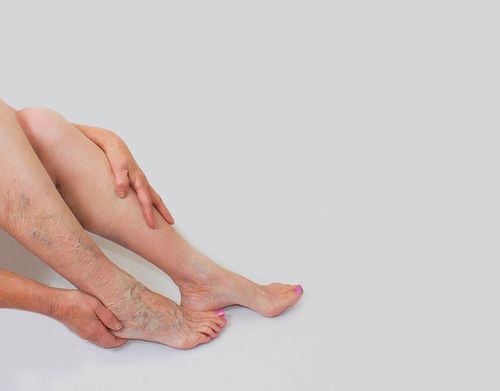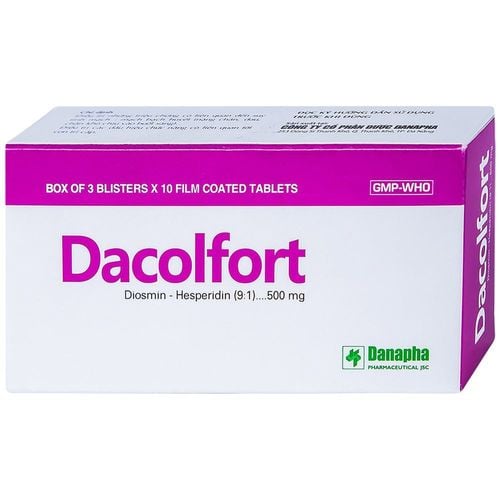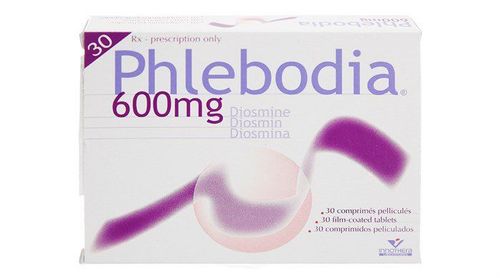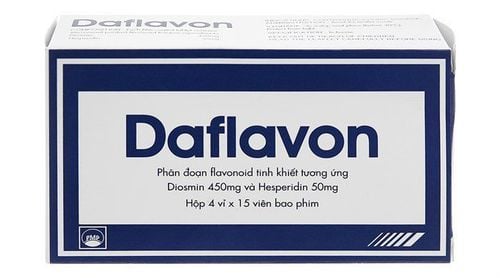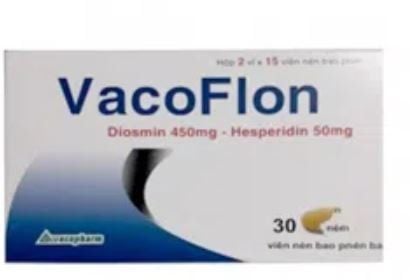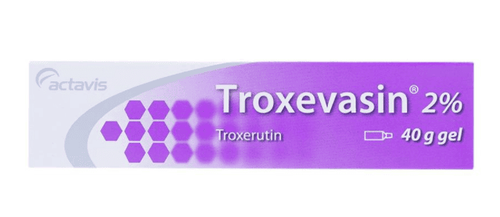This is an automatically translated article.
Articles written by MSc, BS. Vu Thi Tuyet Mai, Cardiology Center - Vinmec Central Park International General Hospital
Venous insufficiency refers to cases where the venous blood does not follow the normal flow but flows back to the already congested peripheral periphery. If not treated early will cause many serious complications, affecting quality of life.
The venous system has the function of bringing blood back to the heart, when weakened, it will cause increased pressure in the venous system and limited blood flow back to the heart, blood stagnation in the venous system, often caused by a combination of combination of the following: failure of the venous valve system, thrombosis causing obstruction, or impaired pumping function of the surrounding muscles, especially the calf muscles.
Recent studies show that the incidence can be up to 50%, depending on the population, and is more common in women than men
1. Causes and clinical manifestations
Risk factors for the disease include: advanced age, family factors, pregnancy, arteriovenous shunt, trauma, previous venous thrombosis, obesity, prolonged standing, smoking.
Clinical manifestations of the disease can range from mild as asymptomatic, fatigue, severe, leg cramps, dry skin, leg edema, varicose veins floating under the skin, darkening of the skin, venous ulcers that are difficult to heal, or Deep vein thrombosis can cause life-threatening pulmonary embolism.
Classification according to clinical, etiology, anatomy and pathology of the disease (CEAP), currently has 7 levels (0-6), mainly based on clinical manifestations:

2. Treatment
2.1. Conservative treatment Applied to all cases, to slow the progression and prevent complications of the disease. If conservative treatment fails or the improvement is not significant, it will be based on the anatomical structure and pathophysiology to choose the next intervention measures.
Change living habits:
Limit standing for a long time, sitting for a long time, resting with your legs elevated; Rhythmic sports: running, walking, swimming, cycling, dancing...; Lose weight, avoid obesity; Eat a lot of fiber, vegetables, drink a lot of water; Avoid constipation; Do not apply hot oil, soak your feet in hot water, or hot mineral water; For patients requiring prolonged immobilization, physical therapy and anticoagulation should be considered to prevent deep vein thrombosis. Wear medical stockings or elastic bandages:
The amount of pressure in the socks depends on the severity of the disease. CEAP C2- C3 pressure level 20-30 mmHg, C4--C6 level 30-40 mmHg, recurrent venous ulcer 40-50 mmHg, knee-length stockings are often used, because of better patient compliance, and acceptable symptom improvement and stockings should be changed every 6-9 months to maintain pressure levels if socks are worn daily.
Exercise therapy:
Abnormal pumping function of the calf muscles plays a significant role in the pathophysiology of venous disease. The restoration of pump function of the calf muscles by daily exercise and exercise activities has been shown to significantly improve symptoms, especially severe stages C4 – C6
Drug treatment:
There are 4 groups of drugs used for treatment today, including coumarins, flavonoids, saponosides and other plant derivatives, which have the effect of increasing venous tone, widely used in Europe, showing improvement. symptoms, but not yet recognized by the US FDA.
2.2. Intravenous interventions Sclerotherapy is the occlusion of dilated capillaries (<1 mm), dilated venous branches (1-4 mm), and regurgitated venous segments with substances. causing fibrosis such as 23.4% sodium chloride hypertonic solution and others such as sodium iodide and chromated glycerin. Possible complications of sclerotherapy are increased pigmentation in the treatment area
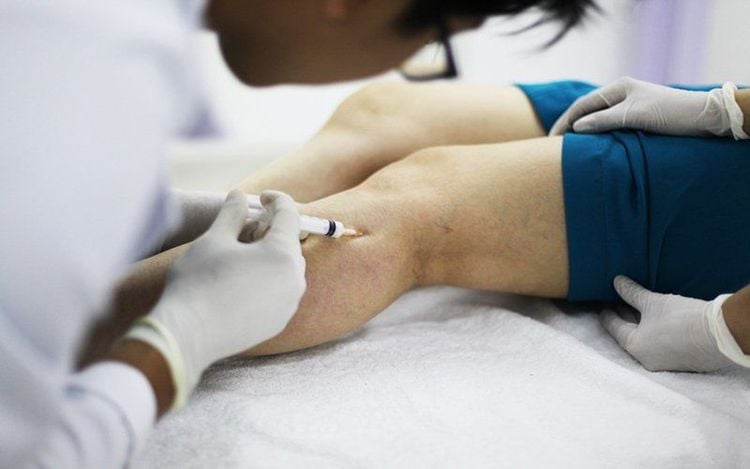
Intravenous interventions
Using heat energy from radiofrequency or laser to cause fibrosis, thrombosis of weakened veins, often used to treat reflux in the great saphenous vein, instead alternative to previous surgical removal of superficial stripping veins. The success rate, improving symptoms in studies is up to 95%. A comparative study of interventions such as laser, radiofrequency, sclerotherapy, and surgical stripping for the treatment of large saphenous venous reflux showed equal effectiveness, but the potential for failure. sclerotherapy is higher, and post-procedural recovery with radiofrequency and sclerotherapy is higher than with stripping and laser surgery.
Many recent studies show that interventions using laser heat energy or high frequency waves are quite safe, the rate of thrombotic complications is low <1%
Surgical surgery
Excision, ligation, Varicose veins were weakened and dilated. Slower recovery time, more pain. Currently, surgical methods are used less often than in the past because endovenous interventions are increasingly proving to be safe and effective.
Treatment depends on the condition of the disease, so when you see signs of varicose veins, go to a reputable medical facility to be examined and treated by a specialist. Vinmec International General Hospital is a high-quality medical facility in Vietnam with a team of highly qualified medical professionals, well-trained, domestic and foreign, and experienced.
A system of modern and advanced medical equipment, possessing many of the best machines in the world, helping to detect many difficult and dangerous diseases in a short time, supporting the diagnosis and treatment of doctors the most effective. The hospital space is designed according to 5-star hotel standards, giving patients comfort, friendliness and peace of mind.
Please dial HOTLINE for more information or register for an appointment HERE. Download MyVinmec app to make appointments faster and to manage your bookings easily.





